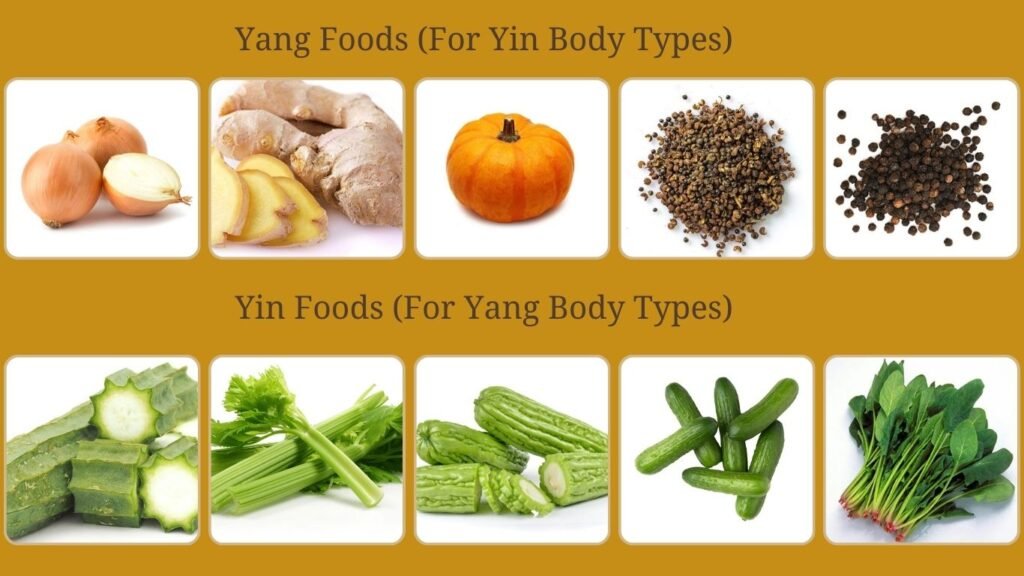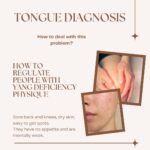Tongue diagnosis in Traditional Chinese Medicine (TCM) is an ancient health assessment method that helps identify imbalances in the body, such as heat, cold, deficiency, excess, and other physical characteristics, by observing the tongue. In everyday life, each person’s body constitution differs due to factors like genetics, environment, diet, and lifestyle. As a result, tongue appearances also vary significantly from person to person.
In this article, we will introduce the tongue characteristics of seven common body types and provide targeted health tips to help readers use TCM tongue diagnosis to identify their unique constitution. This will enable them to adopt personalized health practices for better well-being.
Table of Contents
一. Self-Assessment of Body Type through Traditional Chinese Medicine Tongue Diagnosis: Stick Out Your Tongue for a Quick Test
In Traditional Chinese Medicine (TCM), tongue diagnosis allows us to accurately determine our body constitution by observing the tongue’s appearance. People with different constitutions often have distinct tongue features. Below are the tongue characteristics and recommended remedies for some common body types:
- Body Type: Qi Deficiency
- Tongue Appearance: Pale red tongue with tooth marks on the edges
- Characteristics: Soft and weak muscles, low voice, shortness of breath, tendency to tire easily, lack of energy, prone to sweating, introverted, avoids risks
- Diagnosis: People with Qi deficiency often experience physical weakness and mental fatigue. The treatment focuses on tonifying Qi and nourishing blood.
- Body Type: Yang Deficiency
- Tongue Appearance: Pale, swollen, and tender tongue
- Characteristics: Soft muscles, sensitivity to cold, cold hands and feet, prefers warm foods, low energy, calm and introverted personality
- Diagnosis: Yang deficiency is often marked by a fear of cold and fatigue. The tongue appears pale, and the treatment focuses on warming the body and replenishing Yang energy.
- Body Type: Yin Deficiency
- Tongue Appearance: Red tongue with little moisture
- Characteristics: Slim physique, hot hands and feet, prone to dry mouth and throat, prefers cold foods, constipation, irritable personality, active and outgoing
- Diagnosis: The tongue for Yin deficiency typically shows redness and dryness. Treatment should focus on nourishing Yin and reducing internal heat.
- Body Type: Phlegm-Dampness
- Tongue Appearance: Thick and enlarged tongue with a white, greasy coating
- Characteristics: Overweight, soft and enlarged abdomen, oily skin, excessive sweating, chest tightness, phlegm production, prefers fatty and sweet foods, calm and steady personality
- Diagnosis: Phlegm-dampness is often identified by a large, thick tongue with a greasy coating. Treatment aims to resolve phlegm, reduce dampness, and strengthen the spleen.
- Body Type: Damp-Heat
- Tongue Appearance: Red tongue with yellow, greasy coating
- Characteristics: Average or slim physique, oily skin, prone to acne, bitter mouth, dry mouth, heavy feeling, constipation or loose stools, dark yellow urine, men may experience genital moisture, women may experience excessive vaginal discharge, prone to irritability
- Diagnosis: Damp-heat constitution is marked by a red tongue with yellow, greasy coating. Treatment focuses on clearing heat, draining dampness, and smoothing the liver Qi.
- Body Type: Blood Stasis
- Tongue Appearance: Dark tongue or tongue with purple spots, dark or thick veins under the tongue
- Characteristics: Seen in both lean and overweight individuals, dull complexion, pigmentation, prone to bruising, dark lips, irritability, forgetfulness
- Diagnosis: Blood stasis is often indicated by a dark purple tongue. Treatment focuses on invigorating blood circulation and resolving stagnation.
- Body Type: Qi Stagnation
- Tongue Appearance: Pointed tongue with redness on the edges and tip
- Characteristics: Slim body, depressive mood, fragile emotions, prone to irritability, introverted, unstable, sensitive, and anxious
- Diagnosis: Qi stagnation is marked by a pointed tongue with redness on the tip and edges. Treatment focuses on soothing the liver, promoting smooth flow of Qi, and relieving stress.
二. Understanding Yin and Yang Helps with TCM Tongue Diagnosis
The theory of Yin and Yang is an ancient Chinese philosophical concept that represents opposite yet interconnected attributes of things. Through Traditional Chinese Medicine (TCM) tongue diagnosis, we can apply this Yin-Yang theory to identify characteristics of different body types. For example, the surface of the body is considered Yang, while the internal organs are Yin; the back is Yang, and the abdomen is Yin. According to the classification of the five internal organs and six hollow organs, the five organs store essence and Qi and are considered Yin, while the six organs transform substances but do not store them, making them Yang.
In normal conditions, the Yin and Yang in the body remain in relative balance. When there is an imbalance, it can lead to discomfort or disease. Take fever, for example. Depending on whether Yin or Yang is imbalanced, the treatment methods should vary. Similarly, the same disease, like dysentery, could result from different factors such as damp-heat or deficiency-cold, and different treatment strategies should be applied. This approach is called “treating the same disease with different methods” — even when symptoms are the same, treatment should vary according to individual differences. On the other hand, “treating different diseases with the same method” refers to using similar treatments for conditions with similar symptoms.
In summary, in TCM tongue diagnosis, accurately distinguishing between Yin and Yang body types is essential for a more precise tongue analysis and treatment plan.

1. Yang Body Type
1.1 Characteristics:
- Prefers cold, intolerant to heat
- Red skin, often shiny
- Dark yellow urine, low quantity
- Extremities tend to be warm, thick and strong palms
- Prone to sweating and overheating, strong body odor
1.2 Tongue Appearance:
- Red tongue color
- Yellow or thin coating
- Sometimes cracks on the tongue surface, showing heat-related characteristics
Yang body types generally present as “heat-prone.” Tongue diagnosis will show a red tongue with a yellow coating, and the treatment will focus on clearing heat and reducing fire.

2. Yin Body Type
2.1 Characteristics:
- Sensitive to cold, prefers warmth
- Pale skin with no luster
- Pale, transparent urine, abundant in quantity
- Cold extremities, slender, soft palms and fingers
- Sweats less or doesn’t sweat easily during exercise
2.2 Tongue Appearance:
- Pale and light tongue color
- White coating on the tongue
- Tender tongue with tooth marks on the edges, showing characteristics of deficiency and cold
For those with Yin body types, TCM tongue diagnosis often reveals a pale tongue with a white coating, indicating cold deficiency. Treatment should focus on warming and tonifying Yang energy to help restore the balance of Yin and Yang in the body.

10 Recommended Yin-Yang Attribute Foods
According to Traditional Chinese Medicine (TCM) tongue diagnosis, an imbalance in Yin and Yang can affect the body’s health. Diet is one of the key ways to restore balance. People with different body types should choose foods that align with their TCM tongue diagnosis results, helping to improve health and regulate Yin-Yang balance. Below are 10 foods with Yin-Yang properties that can be recommended:
Yin Foods (For Yang Body Types)
- Bitter melon
- Water spinach
- Purslane
- Houttuynia
- Spinach
- Bitter herbs
- Lotus seed heart
- Loofah
- Cucumber
- Celery
Suitable for: People with Yang body types, who often feel warm, sweat easily, and become easily irritated. According to TCM tongue diagnosis, the tongues of these individuals are usually red with a yellow coating. They should consume foods with cooling properties to help clear heat, detoxify, and restore Yin-Yang balance within the body.

Yang Foods (For Yin Body Types)
- Fresh ginger
- Leeks
- Fennel
- Sichuan peppercorns
- Black pepper
- Pumpkin
- Cilantro
- Chestnuts
- Onions
- Green onions
Suitable for: People with Yin body types, who typically feel cold, have cold extremities, and often feel fatigued. According to TCM tongue diagnosis, their tongues are usually pale with a white coating, indicating insufficient Yang energy. These individuals should consume warming foods to help tonify Yang energy and improve cold conditions in the body.
Summary
Traditional Chinese tongue diagnosis is a valuable method for assessing the body’s yin-yang balance and identifying different body constitutions. Since each person has a unique constitution, their tongue appearance varies accordingly. Understanding one’s body type and analyzing tongue signs can help in adopting personalized health adjustments to restore yin-yang balance and improve overall well-being.
This article introduces seven common body constitutions along with their corresponding tongue characteristics, offering targeted recommendations for health maintenance. It further highlights the significance of distinguishing between yin and yang constitutions in tongue diagnosis and suggests dietary adjustments based on individual body types to regulate yin-yang balance and enhance health.
Lastly, the article provides a list of 10 foods categorized by their yin or yang properties, guiding individuals toward suitable dietary choices for restoring balance and achieving optimal health. Through accurate tongue diagnosis and appropriate dietary adjustments, one can effectively maintain well-being and achieve natural harmony of body and mind.
More Articles in “Tongue Physique”
- Tongue Image Body Type
- Qi Deficiency Body Type
- Qi Stagnation Body Type
- Damp-Heat Body Type
- Phlegm Dampness Body Type
- Blood Stasis Body Type
- Yang Deficiency Body Type
- Yin Deficiency Body Type
Learn more about how to identify your tongue type in Identification Tongue section.




